Al-Masjid Al-Aqsa (or al-Aqsa Mosque), acknowledged by UNESCO to be an exclusively Islamic holy site, is considered one of the holiest and most sacred structures in the Islamic creed. Located in the Palestinian old city of Al-Quds, the 144,000 m2 complex holds 1/6th of the area of the city. Al-Masjid Al-Aqsa translates into “the farthest mosque” or “the remote mosque”, it is associated with the Isra and Mi’raj, a journey made by the Islamic Prophet Muhammad (PBUH) and revered by Muslims around the world.
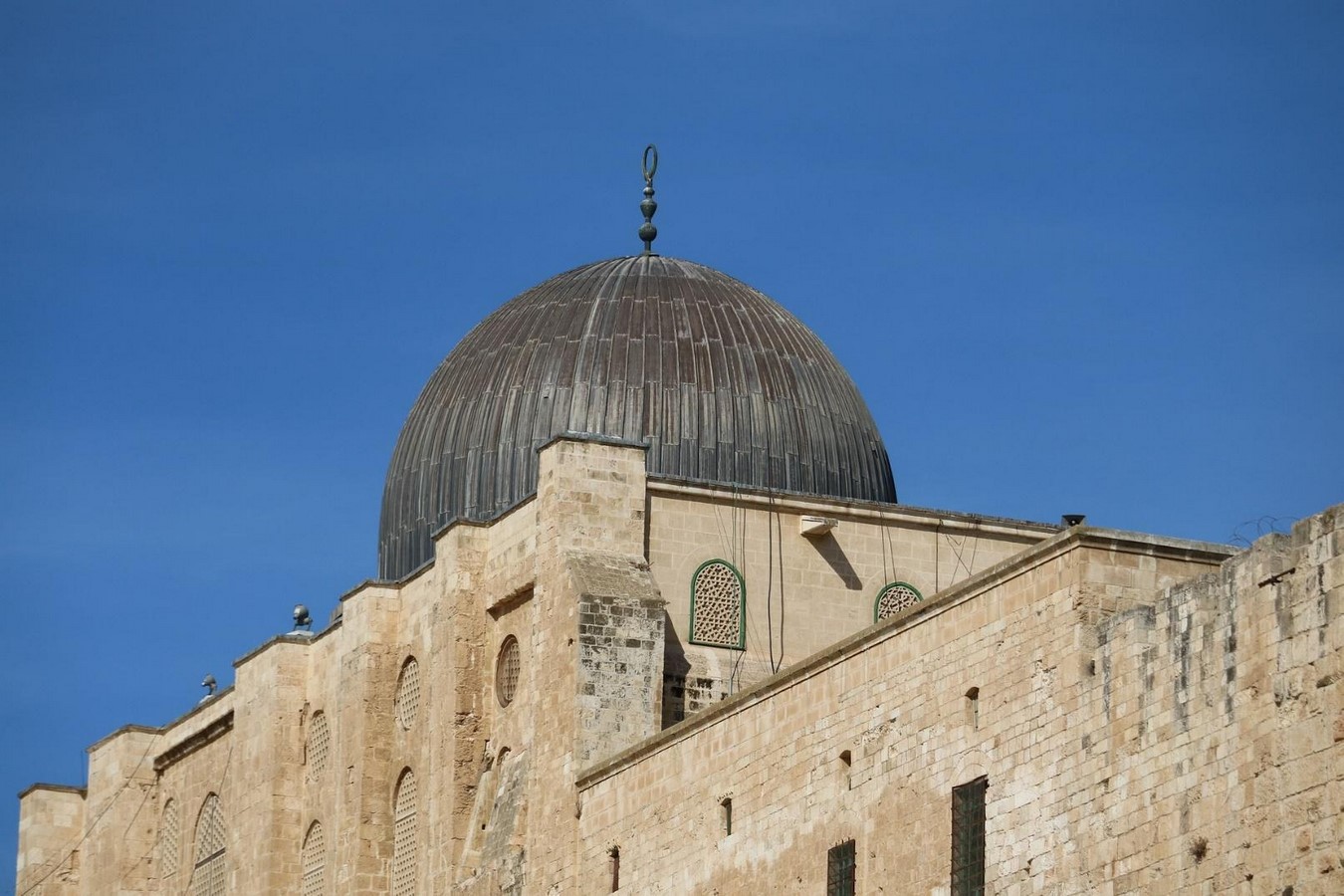
According to Islamic studies, it is the first Qibla and the second mosque built on earth, believed to have been constructed after al-Ka’ba al-Musharrafa by 40 years, Al-Masjid Al-Aqsa is the epitome of Islamic spirituality, surpassed only by al-Ka’ba al-Musharrafa in Mecca, and Al-Masjid an Nabawi (Mosque of the Prophet) in Medina.
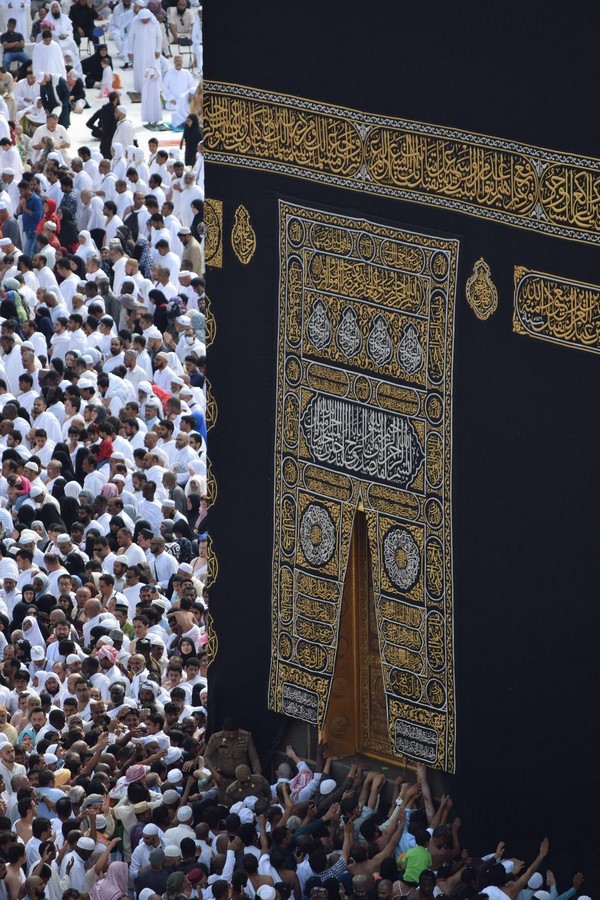
Planning
Al-Masjid Al-Aqsa is a large and rectangular structure with a central prayer hall and a spacious courtyard. It follows a classic hypostyle mosque design from the early Islamic period. It can accommodate 5,000 worshippers and the entire complex can hold hundreds of thousands in its courtyard. According to the Islamic creed, the whole premise of Al-Masjid Al-Aqsa is sacred, not just exclusive to the allocated physical structures. It consists of four different levels:
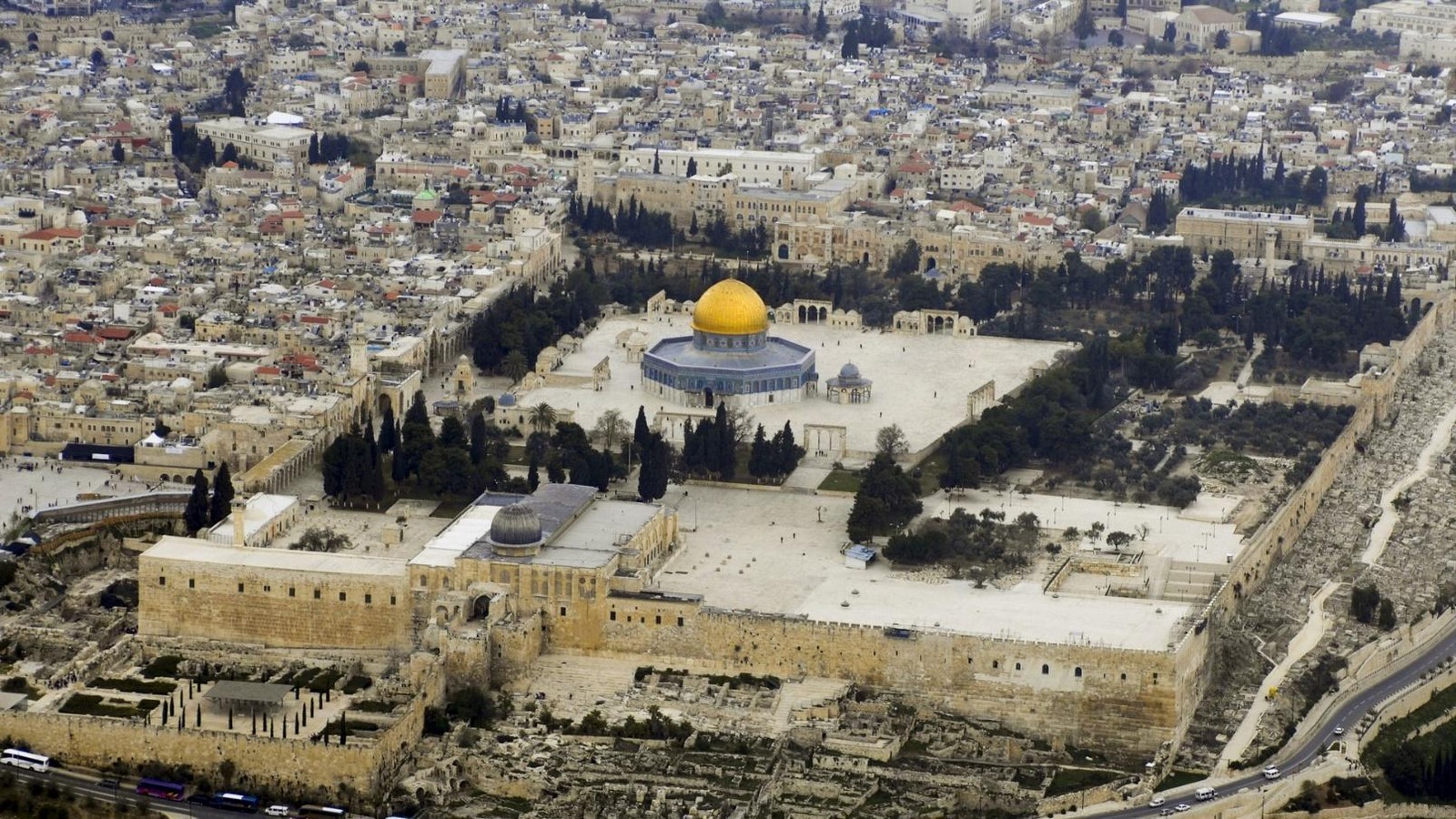
- An underground level containing 25 drinking wells, and water canals.
- The Southern Qibli Mosque (Al-Masjid Al-Qibli) and the middle courtyard include open gates, corridors, platforms, trees, etc.
- The Dome of the Rock (Qubbat As-Sakhrah) features a magnificent golden dome and colorful tilework. Its interior is adorned with intricate mosaics that depict various themes, including geometric patterns and verses from the Quran.
- A subterranean level, including:
- The Marwani prayer hall (Al Musala Al-Marawani) is in the southeastern corner. The Ancient “Aqsa” comprises of two massive corridors leading to the Umayyad palaces, below the current Al-Qibly Mosque.
- The Buraq prayer hall below the Moroccans’ Gate in the west.
- The Golden Gate which is called in Arabic Bab Al-Rahmah and Bab Al-Tawbah, in the east.
- The closed gates: the single, the double, the triple, the Buraq’s Gate, and the lower Gate of the Chain.
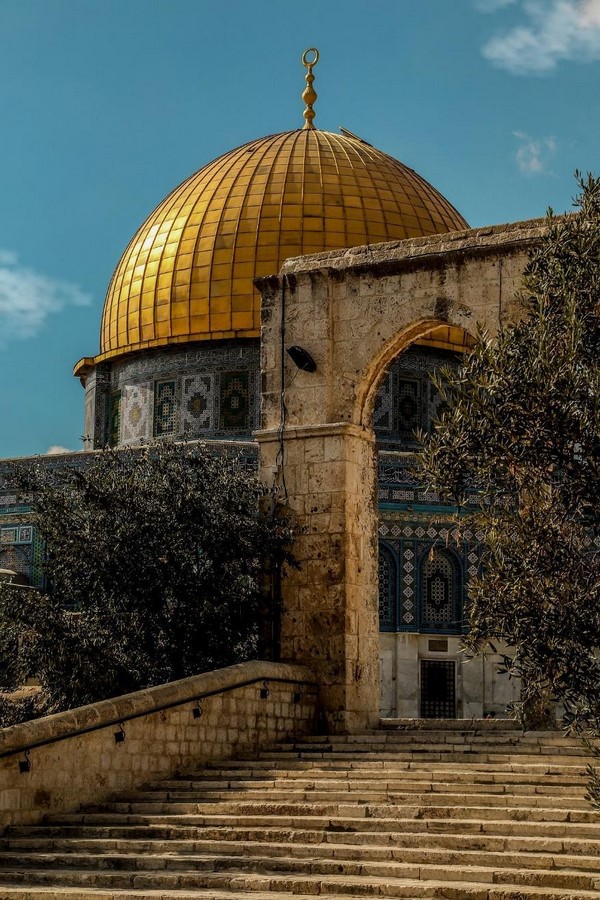
Timeline
Construction by Umayyad Caliphs (691-705 CE): The initial construction of the Al-Aqsa Mosque took place under the orders of the Umayyad Caliphs. The architecture of the mosque from this period reflects early Islamic architectural influences.
Abbasid Period Renovations (8th-9th centuries): During the Abbasid Caliphate, further renovations and expansions were carried out on the Al-Aqsa Mosque complex with the addition of the Dome of the Rock.
Fatimid Era (late 10th century – 11th century): The Fatimids, who ruled over Egypt and parts of the Levant, made extensive renovations to the Al-Aqsa Mosque. The Dome of the Rock received further decorative elements and mosaic work during this time.
Crusader Occupation (12th century): During the Crusader occupation of Jerusalem, the Al-Aqsa Mosque was converted into a Christian church known as the “Temple of Solomon.” The structure underwent significant alterations to suit Christian worship.
Ayyubid and Mamluk Periods (12th-15th centuries): Following the reconquest of Jerusalem by Muslim forces, the Al-Aqsa Mosque was restored to its original purpose. The Ayyubids and Mamluks conducted renovations and added minarets, arches, and decorative elements, including intricate tile work.
Ottoman Period (16th-20th centuries): The Ottomans made various repairs and renovations to the Al-Aqsa Mosque and the surrounding complex, adding new structures and improving the overall condition of the mosque. The distinctive silver dome that exists today was added during this period.
Architecture
The architecture of Al-Masjid Al-Aqsa reflects a blend of architectural styles due to its long history. Elements of Umayyad, Abbasid, Fatimid, Mamluk, and Ottoman architectural influences can be observed in its design. Each dynasty contributed to the building’s expansion and renovation.
Geometric and Floral Patterns: The mosque is adorned with intricate geometric and floral patterns, both inside and outside. These patterns are often executed in vibrant colors and can be seen in various forms, including mosaics, tile work, and painted decorations.
Calligraphy: Arabic calligraphy is a prominent feature of the Al-Aqsa Mosque’s decoration. Verses from the Quran are inscribed on walls and arches. The calligraphy is often rendered in an artistic and visually appealing manner.
Mosaic Work: The mosque features stunning mosaic work that includes various motifs, such as star patterns, arabesques, and floral designs.
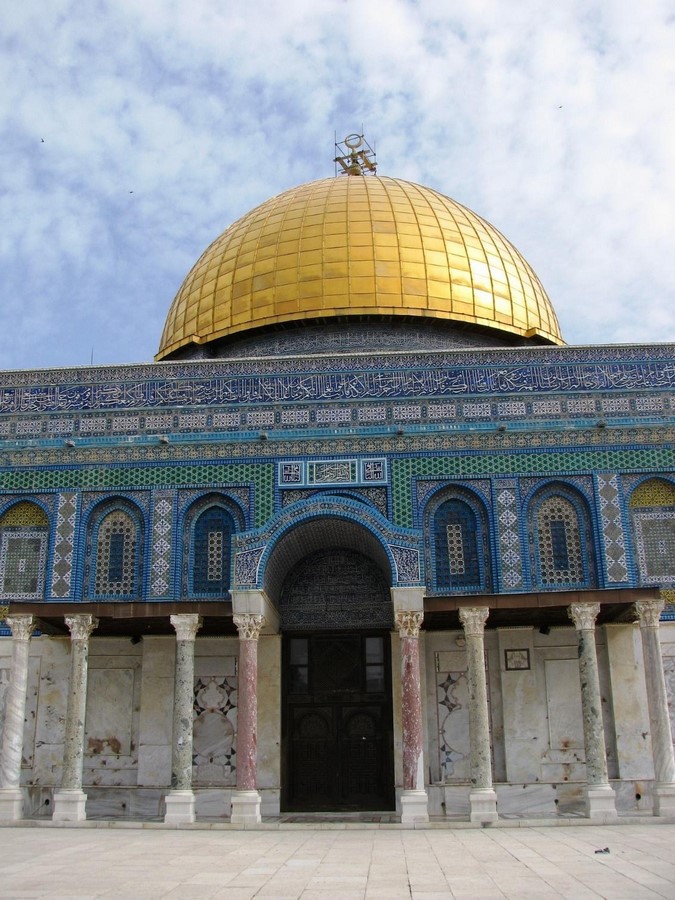
Mihrab (Prayer Niche): The mihrab, located in the qibla wall that faces Mecca, is elaborately decorated with calligraphy and intricate patterns. It serves as a focal point for worship and is a highly decorative element within the mosque.
Arches: The mosque is characterized by numerous arches, both in the prayer hall and the courtyard. These arches are often pointed or horseshoe-shaped, and they contribute to the building’s architectural elegance.
Stained Glass Windows: Some sections of the Al-Aqsa Mosque feature stained glass windows with colorful and artistic designs. These windows allow natural light to filter into the interior and create a captivating visual effect.
Woodwork: Decorative wooden elements, including lattice screens known as “mashrabiyas,” are used for privacy, shading, and ventilation. They are often incorporated into the design of windows, screens, and doors.
Column Capitals: The columns that support the roof and arches in the mosque are often adorned with decorative capitals, featuring carvings and patterns that add visual interest to the architectural elements.
Courtyard: The mosque’s large courtyard is a significant part of its architectural layout. It is surrounded by a colonnade with numerous columns that support a series of arches. The courtyard is open to the sky and serves as a prayer space.
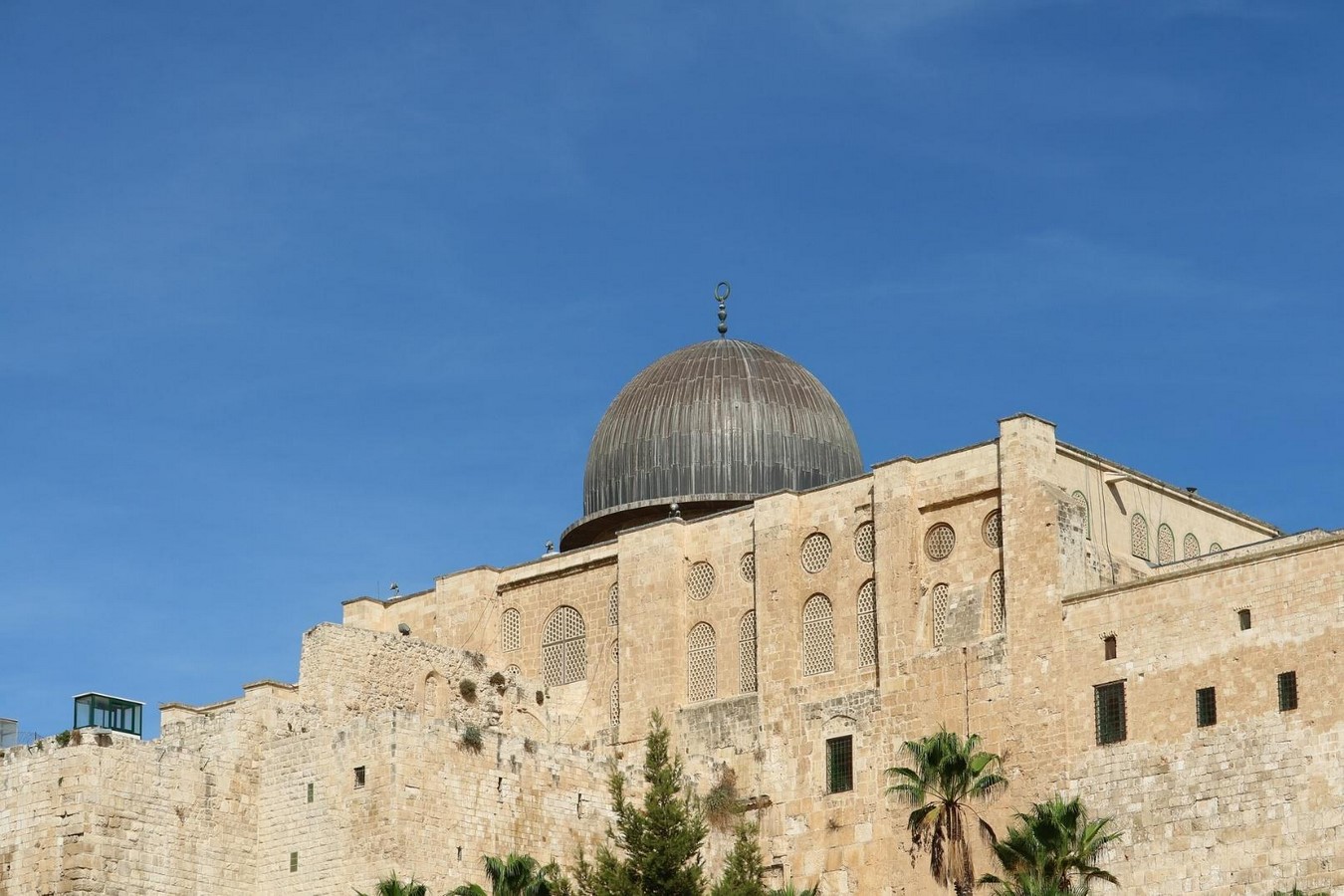
Al Masjid-Al Aqsa remains a symbol of Palestine’s cultural and religious heritage and it will steadfastly remain so due to the generations of Muslims’ unwavering connection to it.

















